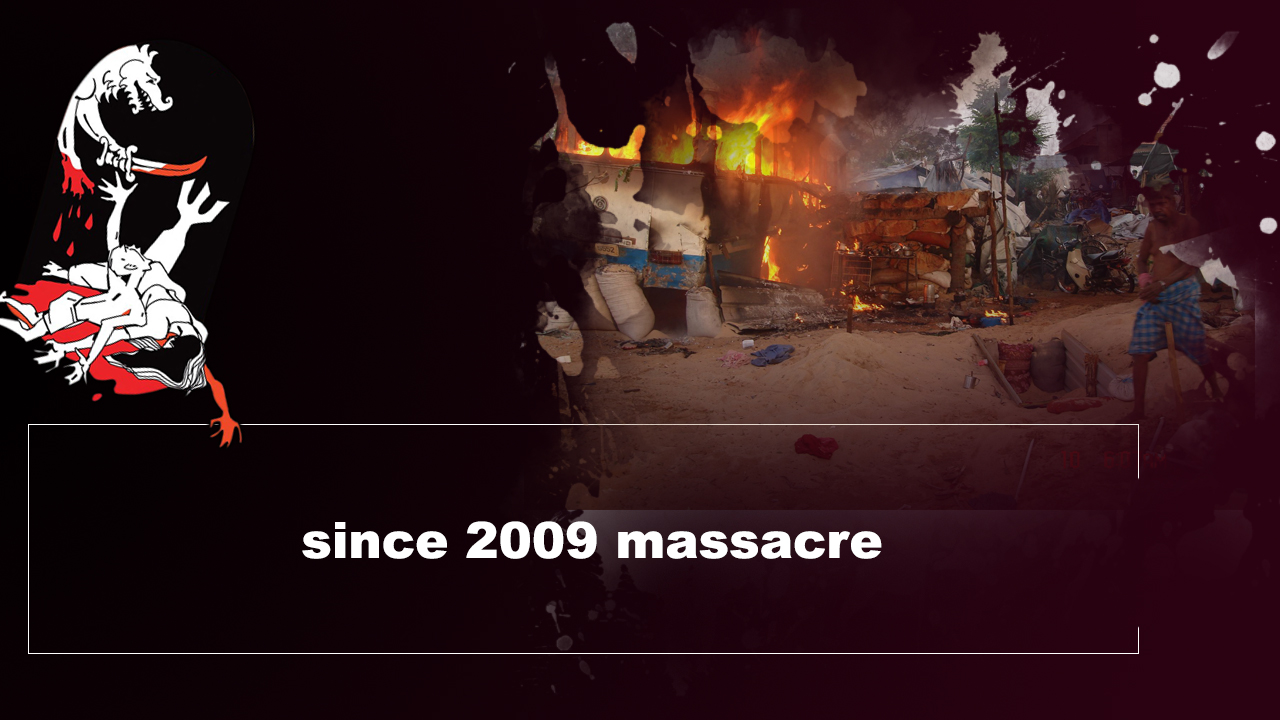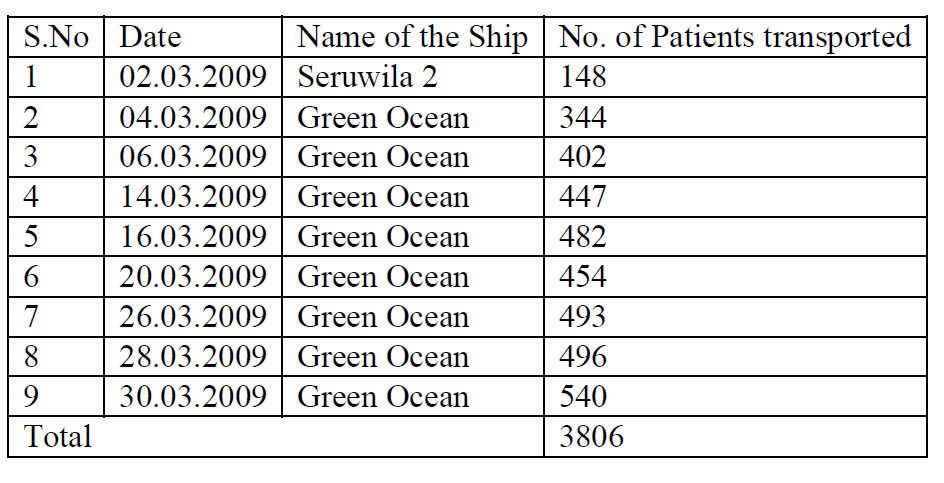The events after the dawn of 2009 still remain darkened due to a war of genocide without witness carried out by the Sri Lankan military on the people caught in a small area that was under the control of the LTTE at the time.
There were clear signals of this impending disaster from the beginning of 2008. As early as 2007, severe restrictions were imposed by the military on the goods arriving to the LTTE area. Several international NGOs that were involved in rebuilding, following the 2004 tsunami, withdrew due to these restrictions on the goods that could be brought in. The restrictions were gradually tightened as time progressed.
Fuel restrictions were the first to come forcing the fuel prices in Vanni to be eight to ten times higher than the rest of the country. Then came the problems with the medical supplies. Health service professionals in Vanni began repeated appeals for medicine stock that were running out while hospital admissions increased due to injuries caused by attacks. Schools that initially suffered shortages of text books and stationary were forced to undergo multiple displacements often functioning without the basic space and furniture. Eventually even food supplies started to run very low. Local food production has also ceased as a result of farmers forced out of their land due to artillery and aerial attacks
In 2008, the Sri Lankan Government pulled out of the 2002 ceasefire agreement. This forced the withdrawal of the Scandinavian peace monitors who had arrived in 2002 to monitor the implementation of the ceasefire. This was followed by the eviction of all international agencies from Vanni in September. By now the alarm signals for an impending genocide was unambiguous. Yet the UN agencies left with the others amidst protests by the locals attempting to stop them leaving.
The attacks and large scale repeated displacement continued. January 2009 saw a marked stepping up of indiscriminate attacks on a small area in which the people were now hemmed in. By this time NESOHR staff was unable to travel to work or visit locations of incidents thus bringing an end to the reports that were released regularly by it until then.
Sri Lankan government declared its first “No Fire Zone (NFZ)” in January. The attacks on NFZ continued. This first NFZ was followed by two more NFZ as the area held by the LTTE shrunk further. Starvation became common place. Hospitals inside NFZ came under repeated attacks. More than thirty attacks on hospitals, both permanent and makeshift, were reported by various sources. As hospitals displaced and injuries increased, the hospitals became just an open space where injured people were brought. ICRC came two or three days in a week to evacuate the seriously injured people by ship to hospitals outside the war zone. The table below from the March situation report by the Mullaithivu district secretariat giving statistics on ICRC evacuation of the injured is typical. The numbers of victims rose exponentially from this period onwards. The same report said 3551 injured civilians were admitted at Puthumathalan Hospital, the only one operating at that time, in the month of March 2009 and 546 died after admission.
Four doctors, three working for the Sri Lankan Government health service and one working in the private Ponnambalam hospital, stayed on to treat the injured. The emails sent out by these doctors appealing to the outside world became the only independent source of news from the war zone from now till May 2009. The emails sent out by the doctors during the later part of April painted the very grim picture in Vanni. By now the media also widely quoted internal UN figures of 7000 civilians killed and 14,000 injured up to end of April 2009. The same figures also showed that 116 civilians were killed every day in April compared to 33 by end of January.
In May 2009 the attacks reached crescendo and the media quoted UN sources estimating 1000 deaths per day until 19 May. On 12 May, an email from one of the doctors said,
“NFZ hospital under shell attack on 12 May 2009. This should not happened and unfortunately without end disaster is continuing. Today around 8 am Mullivaikkal new hospital was shell attacked. The time was very busy and many injured civilians were waiting to get their morning

